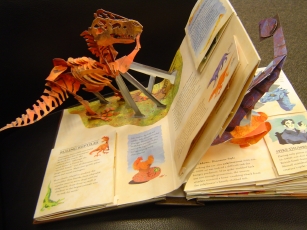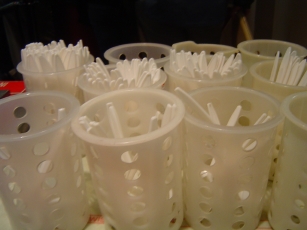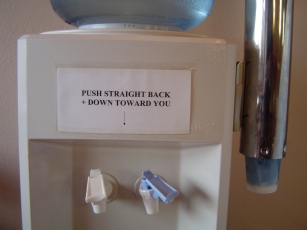Process Improvement Toolbox
- How to Perform a Walk-through
- How to Use the Nominal Group Technique
- Rapid-cycle testing: How to Conduct a Plan-Do-Study-ACT (PDSA) Cycle
- How to Flowchart
- How to Tell a Story
- How to Collect Data
- How to Establish a Change Team
- Visual Modeling Tools
- Creativity and Design
- Sustainability Model
- Getting Things Done
- Essential Team Behaviors
- Using Metaphors to Explore Continuous Improvement
- The Improvement Cafe
- Health Reform Readiness Index
- Technical Assistance Reports
- Recursos en Español
Creativity and Design
Most of us in the working world have heard the term "think outside of the box" many times, because we are asked—implicitly or explicitlyto apply this principle in our work all the time. We are often asked to think creatively during brainstorming meetings, but most of us find it difficult to come up with innovative ideas on the spot.
With this as a backdrop, this tool seeks to answer two questions:
- How do we teach ourselves to think creatively?
- How do we know if our solutions are well designed?
Creative Thinking
Good Observation
is the starting point of good science, and creativity begins by looking at the natural and manufactured world "sideways" on a daily basis, and seeing what is unique and inspiring.
 |
 |
 |
 |
 |
 |
 |
 |
 |
 |
 |
 |
What if ...?
It is relatively easy for us to recognize poorly designed artifacts or services. Thinking of how to improve them can stretch our creative muscles.
 |
 |
 |
 |
Use Conceptual/Verbal Cues
To encourage "thinking outside of the box" we can use:
- Metaphors: a figure of speech in which a word or phrase literally denoting one kind of object or idea is used in place of another to suggest a likeness between them.
Examples: Concept metaphors — improv, jazz, holograms, salt & light, flying geese, fine-toothed comb, in living color. Action metaphors — sounding like a broken record, knock our socks off, pedal-to-the metal, hit the ground running, herding cats, giving food for thought.
Inspiring out-of-the-box thinking makes use of rich metaphors. Poets use metaphors to help us see things in a fresh perspective using concepts we know. For example, what is our organizational metaphor? Are we a lemon, or are we the 800-pound gorilla in our field?
- Analogies: Direct analogies—normally taken from biology—have been extensively used in creative problem solving The behavior of swarms, for example—bees, ants, etc—and their properties of flexibility, robustness, and reliance on simple rules and self-organization, has been effectively applied in different business contexts (E. Bonabeau, C. Meyer. "Swarm Intelligence: A Whole New Way to Think About Business," Harvard Business Review, May 2001, pages 106–114).
Personal analogies – "What if I were a...." can also be powerful because they help understand the user better. We can also draw on popular culture references to help us think creatively (i.e., the MasterCard "priceless" commercials, or "Everything I Learned (About Life), I Learned from Kindergarten/Star Trek/The Easter Bunny/etc." )
- Words/principles from other brainstorming and creative problem-solving techniques, such as the SCAMPER technique.
Absorb & Record
Print media, television, and the Internet offer a wealth of resources that we can harness to generate good ideas. Through practice, everyone can develop his or her latent creativity. Often, however, we lose that brilliant idea we had because we did not record it and share it with others.
Creating an "iBoard" ![]() (where i stands for "ideas", or "inspiration", or "imagination") in the work place can help people generate innovative ideas and provides an atmosphere that fosters creativity. Such a board does not have to be elaborate; simply a place to write, draw, post, or tack any material—from photos and magazine clippings, to lists of words and Web sites—that stimulates creative thinking. These may include:
(where i stands for "ideas", or "inspiration", or "imagination") in the work place can help people generate innovative ideas and provides an atmosphere that fosters creativity. Such a board does not have to be elaborate; simply a place to write, draw, post, or tack any material—from photos and magazine clippings, to lists of words and Web sites—that stimulates creative thinking. These may include:
- Artifacts (i.e., photos of "cool" iPods, BMWs, Harley motorcycles, Swiss army knives)
- Experiences (i.e., rollercoasters, Disney Magic, restaurants, concerts)
- Stories (i.e., inspirational stories from sports, the news, or even patients)
- Ideas (which can come at any time, and are lost if we don't write them down)
- Observations (i.e., behavior in waiting rooms, reactions to paperwork)
- Cues (i.e., lists of metaphors, "all I need to know about life, I learned from...")
With advances in technology, particularly the Internet, we can also record our ideas online through personal or group weblogs . These can be set up for free (see www.blogger.com or www.wordpress.com ), can be developed in-house using open-source technologies (see rubyonrails.com ), or can be purchased from a number of reliable weblog service providers (i.e., see movabletype.org ). No matter what option you choose, they can be powerful, efficient tools in exchanging ideas and information within and among organizations.
Properties of Good Design
Some rules of thumb — culled from design experts — that can be used in designing good services and products include:
- Don't Make Me Think Principle: Keeping things simple goes a long way in making users/clients happy. To the extent that we can standardize processes, and make people learn and adopt rituals , we should do so because we are creatures of habit.
- Boomerang Principle: Giving good system feedback, directions, or instructions are critical, especially in environments that are complex, intimidating, and riddled with negative affect. It is ideal if the user/client knows exactly what part of the process he/she is in, as well as a sense of the road ahead. It is also important to ensure user/client safety in all phases of the process.
- Ctrl-Z Principle: Creating a system that is error-forgiving — where you provide a way for people to retrace their steps and undo the "oops" and "uh-ohs" — is important because people are wired to make errors and mistakes. Minimizing room for error — essentially making the system goof-proof — is a key goal.
- Whiz-Bang! Principle: Start with a bang, end with an oomph! First impressions and first encounters matter more than we think, and ending on a positive note makes people remember the experience better. This is the reason why we want to drive an Aston Martin, and why some sports events end in fireworks. Having extras that people don't expect also enhances the experience.
- Coffee or Tea? Principle: Providing clients/users a choice builds commitment, and makes the users/clients invested in the process.
- Upside-Down Battery Principle: Behavioral science suggests that we get the negative experiences out of the way early, and to "segment the pleasure, combine the pain". (R. Chase, S. Dasu. Want to Perfect Your Company's Service? Use Behavioral Science. Harvard Business Review, June 2001, pages 78–84.)
- Disney Principle: Having a theme, using memorabilia, accentuating the positive over the negative – these can be applied effectively under different business contexts. There will always be an emotional component to any experience, and no one builds emotion into experience better than Disney. ( If Disney Ran Your Hospital: 9 1/2 Things You Would Do Differently . Fred Lee, 2004. Second River Healthcare; ISBN: 0974386014. Also, BJ. Pine II, J. Gilmore. Welcome to the Experience Economy . Harvard Business Review, July/August 1998, pages 97-105.)
References and Suggested Reading
Articles
- R. Chase, S. Dasu. Want to Perfect Your Company's Service? Use Behavioral Science. Harvard Business Review, June 2001, pages 78-84.
- BJ. Pine II, J. Gilmore. Welcome to the Experience Economy . Harvard Business Review, July/August 1998, pages 97-105.
- E. Bonabeau, C. Meyer . Swarm Intelligence: A Whole New Way to Think About Business . Harvard Business Review, May 2001, pages 106-114.
- P. Orbanes. Everything I Know About Business, I Learned from Monopoly . Harvard Business Review, March 2002.
Books
- Universal Principles of Design : 100 Ways to Enhance Usability, Influence Perception, Increase Appeal, Make Better Design Decisions, and Teach Through Design . William Lidwell, Kritina Holden, Jill Butler, 2003. Rockport Publishers; ISBN: 1592530079.
- Design of Everyday Things . Donald Norman, 2002. Basic Books; ISBN: 0465067107.
- The Art of Innovation: Lessons in Creativity from IDEO, America 's Leading Design Firm. Tom Kelley, et al., 2001. Currency; ISBN: 0385499841.
- If Disney Ran Your Hospital: 9 1/2 Things You Would Do Differently. Fred Lee, 2004. Second River Healthcare; ISBN: 0974386014.



